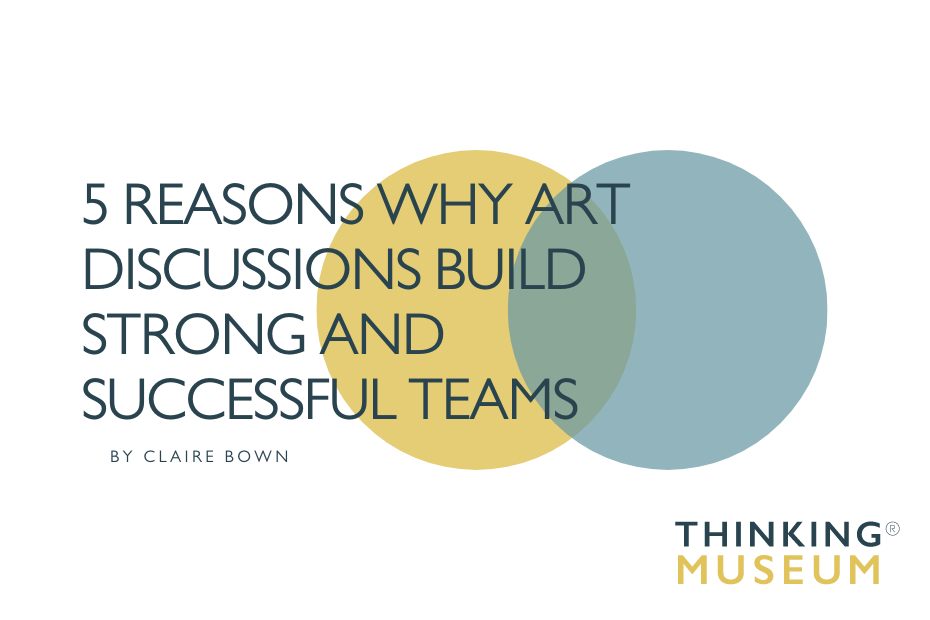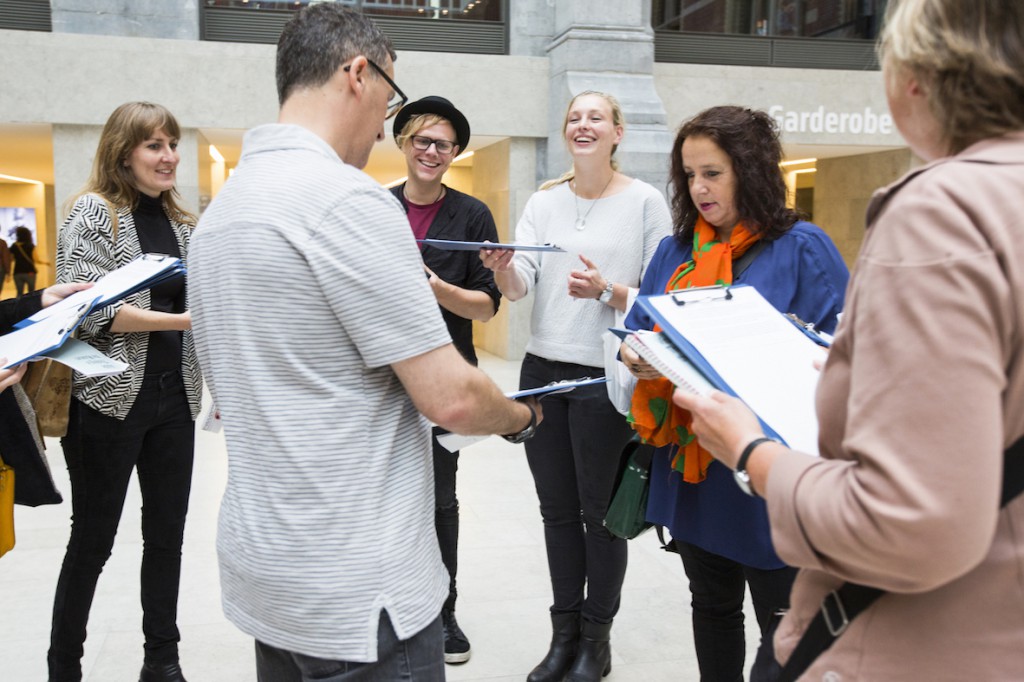Maybe looking at art is not the first thing that springs to mind when we talk about sharpening transferable skills and building strong teams, but art-based activities in museums centred around discussing art and museum objects are becoming increasingly popular for company team events.
I’ve been running art discussion sessions for corporate teams for years and have designed a wide variety of museum programmes for companies large and small based on their personal objectives. I firmly believe that looking at (and discussing) art builds strong and successful teams, and here are my top five reasons why.
1. Anyone can look at art.
I firmly believe that anyone can look at and discuss art – you don’t need to be an art historian and you certainly don’t need to have any prior experience or art training to look at a painting (in fact, prior knowledge and experience can sometimes be a hindrance and can colour your objectivity). I use artworks in museums as visual information and in order to read them we discuss and arrange activities around what we see. This allows guided discovery to take place – posing questions and support the flow of the discussion whilst enabling the participants to learn about the artwork themselves without explicit instruction from the facilitator. As such, we are teaching our visitors tools and techniques that can be used by our participants on return visits to museums without an educator. My team-building activities do not enforce competition between employees, quite the contrary – all participants work collectively towards a group effort in reaching an understanding of a series of artworks.
2. Art develops observational skills
We live in an image-saturated visual world and understanding how images communicate information and ideas is increasingly important. The Toledo Museum of Art, which has developed its own Visual Literacy Curriculum believes that art museums ‘are specially equipped to help people learn how to unlock the meanings of images.’ The curriculum involves training people to understand their own viewing process and being able to distinguish between “looking” and actually “seeing.”
“Looking and seeing are the same thing, right? What is the difference between these two actions? If visual literacy is the ability to read, write, and comprehend visual language, then looking at an image is similar to skimming a text while seeing an image is comparable to reading it.” (Bill Kennedy in ‘Why Visual Literacy Is More Important Than Ever & 5 Ways to Cultivate It”)
How well do we really observe the world around us? Do we use our eyes properly? We are so used to scanning and skimming things, objects, situations, texts for the relevant information. We miss so much. In my approach, I teach participants how to strengthen their observational skills. We show how you can teach yourself to notice more – how you can be more attentive to your environment, see beyond your first impressions and look a little deeper. We are fascinated by what happens when we slow down and take the time to use our eyes more carefully.
Looking at artworks in museums can improve your visual acumen and make you more alert, aware and attentive to details in all aspects of your personal and work life.
3. Art enhances well-being
A host of recent studies have shown that art has a dramatic impact on a person’s health, outlook and the way they view the world. Viewing art has an effect on the brain and can also trigger the release of feel-good chemicals, such as serotonin and dopamine. Moreover, we believe that a museum-setting is the ideal place to disconnect from an over-reliance on technology and as such we encourage all participants to put away their cellphones at the beginning of our workshops. This is so that participants allow themselves time to concentrate and focus, engage their senses and slow down.
I was recently interviewed for an upcoming article in a Dutch health magazine about environments you can find peace. I talked about the value and importance of going to museums. In an age where the average person checks their phone 85 times a day, our inundated brains are slowing down . In The Distracted Mind: Ancient Brains in a High Tech World, the authors Adam Gazzaley and Larry D. Rosen talk about the need for us to ‘re-train ourselves to become comfortable with sustaining our attention on a single goal’ and ‘to learn the value and to appreciate the value and to even feel the value of sustained attention.’
Museums and the artworks and objects inside them offer refuge from the rush and time to slow down and see the details. Chances are you’ll feel a lot better and more refreshed after a digital detox in the museum too. Author and art historian Jonathan Fineberg even believes that looking at art is more or less like sending your brain to the gym.
4. Art helps us to see things from multiple angles
Amy E Herman, author of ‘Visual Intelligence: Sharpen your Perception, Change your Life’ believes that where we stand (in all senses of the word) can dramatically change the way we view things. Things are not always what they appear to be, especially at first glance.
If you take a work of art, you can literally view it from all angles – we can go up close and carefully look for small details and we can back up and view from far away to zoom out and get the whole picture. We can look at things differently by literally changing our positioning. This can help a group discussion that has got stuck in a rut or needs a new direction – we ask all participants to switch position (sometimes from low to high, left to right and so on) and ask them if they notice any differences or similarities from their new positions. A change of environment kick-starts your brain.
We can also look an artwork from other perspectives – that of the artist (‘what might his/her intentions have been?’), the curator (‘what decisions might have driven him/her to choose this particular work to display?’) or the museum (‘what role might this work play in the overall storyline of this exhibition?’).
Many artworks force us to confront our assumptions and offer us possibilities to generate new ways of thinking about something. We can omit the title of the work (particularly if it is provocative) until an opportune moment arises in the discussion to add this information and then pause before asking ‘Does this make you think differently in any way?’ We can also invite participants to ‘step-inside’ a person, object or element in a piece of artwork and consider what that person/object might feel, believe or indeed care about.
Our perspectives shape how we act or respond in given situations. Being able to view things from a multitude of perspectives other than your own is a key – and desirable – leadership skill. Evidence suggests that consciously focusing on perspective-taking can make teams more effective and can enable deeper thinking that results in better outcomes.
5. Art sparks creative thinking
And finally, looking at art can supercharge your creativity, something that is crucial for innovation and adaptation. As we have seen, a change of setting from your usual (work) environment to somewhere different, such as a museum, is an ideal place to refresh the creative side of your brain. Stepping outside of your comfort zone in an unfamiliar environment allows you to refocus your perceptions and see things anew. Discussing art in a group asks participants to develop original thoughts, brainstorm options, problem-solve and use your imagination. Looking at and discussing art sharpens these skills by encouraging multiple interpretations and diverse ways of looking at things.
Sign up for my Curated newsletter
Every other Friday I share a small dose of curated inspiration. It might be things I’ve read, things I’ve listened to or things I’ve watched.
Hear about my latest podcast episode and read useful tips, recommendations and things that I love. Join via the button below.

